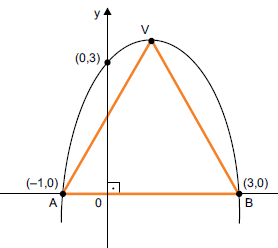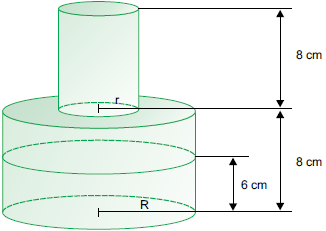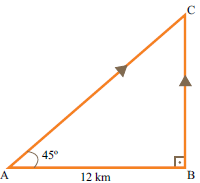Questões de Concurso Militar APMBB 2013 para Aspirante da Polícia Militar
Foram encontradas 80 questões
Violence Prevention Among Young People in Brazil
Crime and violence have increased dramatically in Brazil in recent decades, particularly in large urban areas, leading to more intense public debate on causes and solutions. The right to life is the most fundamental of all rights. Having security means living without fearing the risk of violation of one’s life, liberty, physical integrity or property. Security means not only to be free from actual risks, but also to be able to enjoy the feeling of security. In this respect, human rights are systematically undermined by violence and insecurity.
UNESCO expects to play a primary role in supporting actions of social inclusion to help in the prevention of violence, especially among young people. The attributes and resources to be found in the heart of the Organization’s different areas will be grouped around this objective.
Violence is seen as a violation of fundamental human rights, as a threat to the respect for the principles of liberty and equality. An approach focused on the access to quality education, to decent jobs, to cultural, sports and leisure activities, to digital inclusion and the protection and promotion of human rights and of the environment will be implemented as a response to the challenge of preventing violence among youths. Such approach should also help in creating real opportunities for young people to improve their life conditions and develop their citizenship.
(www.unesco.org. Adaptado)
Violence Prevention Among Young People in Brazil
Crime and violence have increased dramatically in Brazil in recent decades, particularly in large urban areas, leading to more intense public debate on causes and solutions. The right to life is the most fundamental of all rights. Having security means living without fearing the risk of violation of one’s life, liberty, physical integrity or property. Security means not only to be free from actual risks, but also to be able to enjoy the feeling of security. In this respect, human rights are systematically undermined by violence and insecurity.
UNESCO expects to play a primary role in supporting actions of social inclusion to help in the prevention of violence, especially among young people. The attributes and resources to be found in the heart of the Organization’s different areas will be grouped around this objective.
Violence is seen as a violation of fundamental human rights, as a threat to the respect for the principles of liberty and equality. An approach focused on the access to quality education, to decent jobs, to cultural, sports and leisure activities, to digital inclusion and the protection and promotion of human rights and of the environment will be implemented as a response to the challenge of preventing violence among youths. Such approach should also help in creating real opportunities for young people to improve their life conditions and develop their citizenship.
(www.unesco.org. Adaptado)
Violence Prevention Among Young People in Brazil
Crime and violence have increased dramatically in Brazil in recent decades, particularly in large urban areas, leading to more intense public debate on causes and solutions. The right to life is the most fundamental of all rights. Having security means living without fearing the risk of violation of one’s life, liberty, physical integrity or property. Security means not only to be free from actual risks, but also to be able to enjoy the feeling of security. In this respect, human rights are systematically undermined by violence and insecurity.
UNESCO expects to play a primary role in supporting actions of social inclusion to help in the prevention of violence, especially among young people. The attributes and resources to be found in the heart of the Organization’s different areas will be grouped around this objective.
Violence is seen as a violation of fundamental human rights, as a threat to the respect for the principles of liberty and equality. An approach focused on the access to quality education, to decent jobs, to cultural, sports and leisure activities, to digital inclusion and the protection and promotion of human rights and of the environment will be implemented as a response to the challenge of preventing violence among youths. Such approach should also help in creating real opportunities for young people to improve their life conditions and develop their citizenship.
(www.unesco.org. Adaptado)
Violence Prevention Among Young People in Brazil
Crime and violence have increased dramatically in Brazil in recent decades, particularly in large urban areas, leading to more intense public debate on causes and solutions. The right to life is the most fundamental of all rights. Having security means living without fearing the risk of violation of one’s life, liberty, physical integrity or property. Security means not only to be free from actual risks, but also to be able to enjoy the feeling of security. In this respect, human rights are systematically undermined by violence and insecurity.
UNESCO expects to play a primary role in supporting actions of social inclusion to help in the prevention of violence, especially among young people. The attributes and resources to be found in the heart of the Organization’s different areas will be grouped around this objective.
Violence is seen as a violation of fundamental human rights, as a threat to the respect for the principles of liberty and equality. An approach focused on the access to quality education, to decent jobs, to cultural, sports and leisure activities, to digital inclusion and the protection and promotion of human rights and of the environment will be implemented as a response to the challenge of preventing violence among youths. Such approach should also help in creating real opportunities for young people to improve their life conditions and develop their citizenship.
(www.unesco.org. Adaptado)

Sabendo que o tempo médio foi de 21,75 minutos e o tempo mediano foi de 22 minutos, pode-se afirmar corretamente que os valores de p e de q são, respectivamente,

Os vértices do triângulo AVB estão sobre a parábola, sendo que os vértices A e B estão sobre o eixo das abscissas e o vértice V é o ponto máximo da parábola. A área do triângulo AVB, cujas medidas dos lados estão em centímetros, é, em centímetros quadrados, igual a

A área da superfície do corte, de forma retangular, é, em centímetros quadrados, igual a
Curso/Idioma Homem Mulher Total
Inglês 75 40 115
Espanhol 20 25 45
Italiano 15 10 25
Francês 10 5 15
Total 120 80 200
Sorteando-se dois nomes desse grupo, com reposição, a probabilidade de que ambos sejam de pessoas do mesmo sexo é de

O volume da água, quando seu nível atinge 6 cm de altura, é igual a 96 π cm³. Quando totalmente cheio, o volume da água é igual a 178 π cm³. Desse modo, é correto afirmar que R e r medem, em centímetros, respectivamente,

Admita que, nesses trajetos, as velocidades médias desenvolvidas pelas viaturas que estavam nos pontos A e B tenham sido de 60 km/h e 50 km/h, respectivamente. Nesse caso, pode-se afirmar que o intervalo de tempo, em minutos, decorrido entre os momentos de chegada de ambas no ponto C foi, aproximadamente,
Dado: √2 = 1.41